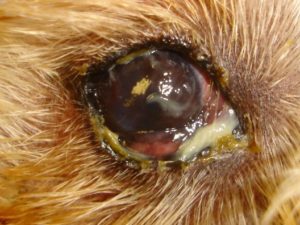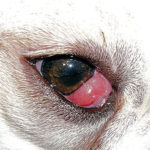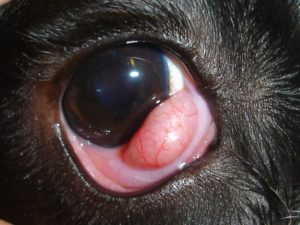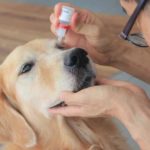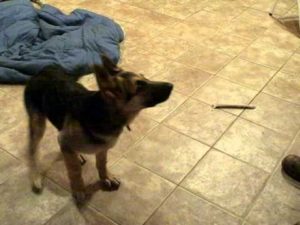Introduction
A Cocker Spaniel, as well as other purebreds, has a genetic predisposition to certain illnesses and conditions. It is crucial for a Spaniel owner to spot the early symptoms of an eye disease and visit a vet doctor before the problem becomes irretrievable.
Why Do the Eye Problems Occur?
Some of the eye diseases that can affect your Cocker Spaniel can be hereditary, or may be caused by a virus, bacteria, poor hygiene, or allergens.
Recommendation: at least twice a week check the eyes of your Cocker Spaniel. The best preventive measures are constant examination, eye irrigation and special massage.
Most Common Eye Diseases
-
- Glaucoma. It is a condition, when the pressure inside the eye ball is too high for a long period of time. In most cases this condition leads to complete blindness. Symptoms: pain, red eyes, sensitivity to light, protruding eyeball. Glaucoma can be primary or secondary, in this regard dog may be treated with medicines, or with the surgery. There are cases, when glaucoma becomes unrecoverable despite any treatment.
- Canine conjunctivitis. Is a discharge infection of the conjunctiva. Inflammation may be caused by fungi, virus or bacteria. Sometimes, eye conjunctiva becomes irritated by an allergic reaction to pollen or grasses. Symptoms: pink whites of the eyes, red inflamed conjunctiva, yellow or white sticky discharges, itch in the eyes. Conjunctivitis is usually treated with antibiotics.
Advice: if your vet has prescribed your dog the eye drops, before they are instilled, the eyes should be bathed with herbal brew or special solution.
-
- Entropion. The most painful eye condition where your dog’s eyelid rolls inward, causing the eyelashes to rub against the eyeball which leads to long-term considerable irritation and pain. Normally, the condition affects two eyes at the same time with lower lids more predisposed to rolling. Symptoms: acute constant pain, watery eyes, blinking, swollen lids, and ulcers. Special creams and drops are used to reduce the pain, but to completely eliminate the problem, surgical treatment (blepharoplasty) is needed.
Warning! Since this condition is hereditary, senior Spaniels are most prone to it. Also, puppies can be born with rolled eyelids already.
- Prolapsed Third Eyelid Gland (PTEG) is also known as ‘Cherry Eye’. A tear gland that is situated in the third eyelid bursts out of its regular position and gets to the inside corner of the eye in form of the red swelling. In the case of PTEG, your veterinarian can offer a surgery to suture the gland in the place. However, after the surgery, your Spaniel can get the problem of a dry eye.
- Dry Eye (Keratoconjunctivitis Sicca). A condition, when the tear gland doesn’t produce enough moisture to lubricate the eye ball, thus the eye becomes dry and irritated. This condition can lead to more serious problems (various infections and even blindness!). Symptoms: eyeball redness and irritation, squinting, lack-luster eyes, sensitivity to light, eye discharges. Your veterinarian can prescribe your Spaniel some antibiotics and corticosteroids to cure the Dry Eye.
- Progressive Retinal Atrophy (PRA). Hereditary eye illness among Spaniels which leads to actual blindness. Symptoms: dilated pupils, night blindness and difficulty in low light. Unfortunately, today there is no treatment for PRA.
Be careful! If you notice some of the above mentioned symptoms of the eye diseases, do not wait that the problem will eliminate by itself. It is highly necessary to visit a veterinarian at once.

